Is the Terracotta Army still being excavated?
Terra Cotta Warriors: half a century of excavation and unsolved mysteries
In the spring of 1974, several farmers in Lintong, Shaanxi, dug up broken pottery pieces while digging wells, and unexpectedly woke up an “underground army corps” – the Terra Cotta Warriors of the Qin Shihuang, who had been sleeping for 2000 years. This discovery is widely recognized as one of the greatest archaeological discoveries of the 20th century. Fifty years have passed, and as people stand in front of the magnificent Pit 1, they still cannot help but wonder: Has the excavation work of these clay warriors been completed? The answer is no. Archaeological work is still ongoing, and the main tomb of Emperor Qin Shi Huang is still hidden deep under sealed soil, quietly waiting for future technology to uncover its secrets.

1、 Half a century of archaeological exploration
The excavation of the Terra Cotta Warriors has never stopped. It is a scientific undertaking spanning several generations. Archaeological work has been ongoing for a full half century since its first discovery in 1974. In 2009, the Museum of the First Emperor’s Mausoleum of the Qin Dynasty launched the third archaeological excavation of Pit 1 of the Terra Cotta Warriors. The excavation lasted for 13 years, until 2022. In this excavation, archaeologists cleared an area of about 430 square meters, equivalent to half the size of a basketball court, and discovered more than 220 pottery figurines, 16 pottery horses, 4 chariots, and a large number of weapons.
In 2024, archaeologist Shen Maosheng, a researcher standing in Pit 1, is still carefully brushing away the dust on the surface of the terracotta figurines. Although not as sensational as the first discovery in 1974, this excavation brought many new insights: clarified the weapon allocation relationship, cleared the first shield in the pit, preliminarily clarified the military formation arrangement rules, and clarified the production process of pottery figurines.
In its northeast direction, a new round of excavation work for Pit 2 has been underway intensively since 2015. Researcher Zhu Sihong, who is responsible for this project, participated in the first excavation of Pit 2 thirty years ago. Now with white hair on his temples, he still stands firm on the archaeological front line: “The Second Pit is a military formation in the shape of a square foot, with three types of terracotta warriors that are not found in the First Pit: cavalry figurines, kneeling shooting figurines, and standing shooting figurines. Together, they form an underground mixed army.
2、 New model of high-tech “three synchronizations”
Compared to earlier times, today’s archaeological work has undergone revolutionary changes:
-Excavation, protection and display at the same time: In September 2024, the “On site Emergency Protection Laboratory” in Pit 1 and the “Archaeological Site Excavation and Protection Platform” in Pit 2 of the Terra Cotta Warriors were officially opened. These facilities are equipped with cabin environment control systems, dedicated lighting systems, cultural relic information collection systems, and cultural relic lifting equipment, achieving a “closed-loop system from archaeological sites to laboratory restoration”.
-Precision instrument assisted restoration: restoration experts use industrial grade scanners to collect surface information of cultural relics and establish a three-dimensional information database; Using virtual stitching technology, based on the similarity measurement of geometric features of fragments, all fragments are stitched in order.
-Breakthrough in color protection: The Terra Cotta Warriors were originally colorful, with pink cheeks, vermilion lips, and purple sleeves. However, once unearthed, these pigments will dehydrate, curl up, and peel off within 4 minutes. After years of international cooperation, scientists have finally developed the “combined treatment method of anti wrinkle and reinforcing agents”, which can preserve the colors of these two thousand years ago. The most eye-catching discovery is the “Chinese Purple” found on the terracotta figurines – an artificially synthesized copper barium silicate pigment, whose composition ratio and firing technology showcase the astonishing chemical knowledge of Qin Dynasty craftsmen.
3、 Key discoveries from 50 years of excavation
Half a century of continuous excavation has brought fruitful results:
- Decryption of production process: Archaeologists have clarified the production process of pottery figurines – first shaping the torso, then covering it with fine mud and carving details such as armor, and finally making and bonding the arms separately. Some of the terracotta figurines are engraved with the names of craftsmen (such as “Gong De” and “Xianyang Wei”), which reflects the quality management system of “Wu Le Gong Ming” in the Qin Dynasty, and craftsmen are responsible for their own works.
- Military equipment restoration: Complete shields, war drums, and drumsticks were cleared for the first time during excavation. The problem of using the Qinmu (an auxiliary tool for correcting crossbows) has been solved in long-range weapons. What is particularly astonishing is the discovery of 40000 triangular arrowheads, with a maximum measurement error of only 0.22 millimeters, demonstrating the astonishing standardized production capacity of the Qin Dynasty.
- Clues to the mystery of destruction: Archaeologists discovered burnt pottery figurines at the location of the tunnel, which were severely deformed and discolored, and some even burned. The gray of the shed wood appears white, indicating an extremely high combustion temperature. Based on historical records, archaeologists speculate that Xiang Yu, the overlord of the Western Chu Dynasty, may be the “number one suspect” in burning the Terra Cotta Warriors – his army once destroyed the Qin Shihuang Cemetery, and the Hongmen Feast was only five kilometers away.
- Panoramic layout of the mausoleum: After systematic exploration, the entire mausoleum area of Emperor Qin Shi Huang covers an area of about 56 square kilometers and is divided into three levels: inner, middle, and outer. At present, it has been discovered that there are 88 accompanying burial pits, 164 accompanying tombs, as well as a large number of architectural and kiln sites in the cemetery. In 2024, archaeologists excavated 9 large and medium-sized accompanying tombs on the west side of the cemetery, among which the largest “Tomb No.1 of Lingxi” is 100 meters long and 15.6 meters deep, and unearthed a single gold and silver camel. These exquisite handicrafts, measuring 5 centimeters in height, brought forward evidence of cultural exchange between China and the West before the opening of the Silk Road, rewriting historical cognition.
4、 The Mausoleum of the First Qin Emperor: The Choice of Sleeping for a Thousand Years
When tourists marvel at the spectacular Terra Cotta Warriors, they often ask: When will the main tomb of the First Emperor of Qin be excavated? The answer may be surprising – they won’t actively explore in the short term.
-Technical limitations and protection concept: Wu Yongqi, an expert in cultural relic restoration, clearly stated: “Unless it is a salvage excavation for protection, do not dig if possible. Underground cultural relics are very fragile, especially plant fibers and animal fibers. If they are opened recklessly, it will have a great impact on them. Our ancestors slept well here, so there is no reason to insist on digging them out.
-Verification of mercury rivers: modern geophysical exploration technology has detected that the mercury content in the sealed soil of the the Mausoleum of the First Qin Emperor is more than 70 times that of the surrounding soil, which confirms the record of “taking mercury as rivers and seas” in Records of the Historian. These highly toxic substances, combined with unknown structural risks, make excavation work full of danger.
-The problem of color protection: Although the color painting protection of the Terra Cotta Warriors has made progress, the existing technology is still insufficient in the face of larger main tombs. Li Gang, the director of the Qin Shi Huang Mausoleum Museum, said, “The real protection is not excavation, but the proper preservation of the code of civilization for the future.
5、 From rural Shaanxi to the world stage
The excavation of the Terra Cotta Warriors is not only an archaeological work, but also a civilization dialogue spanning time and space:
-Global cultural envoy: In the past 50 years, the Terra Cotta Warriors have exhibited 277 times in 49 countries and regions around the world, and received more than 160 million visitors, including more than 200 foreign heads of state and government. In 2023, the Mausoleum Museum of Emperor Qin Shi Huang received over 11 million visitors, setting a new historical high.
-International Cooperation Research: The Qin Shi Huang Mausoleum Museum has established long-term cooperative relationships with research institutions in Germany, Belgium, the United Kingdom, France and other countries. In May 2024, China and France signed an agreement to jointly carry out research on the protection of the wooden remains of Notre Dame Cathedral and the Qin Mausoleum ruins, achieving a “dream linkage” between the two cultural heritages in the field of technological protection.
-Digital immortality: Even if it is impossible to be on the scene, the global audience can enjoy the Terra Cotta Warriors online through the “50 billion pixel ultra-high definition panorama”, and even the hair lines of the Terracotta Warriors can be clearly seen. The AI interactive device “Searching for Qin Terracotta Warriors” allows visitors to match their most similar faces with the terracotta warriors after taking photos, bringing modern people closer to ancient civilization.
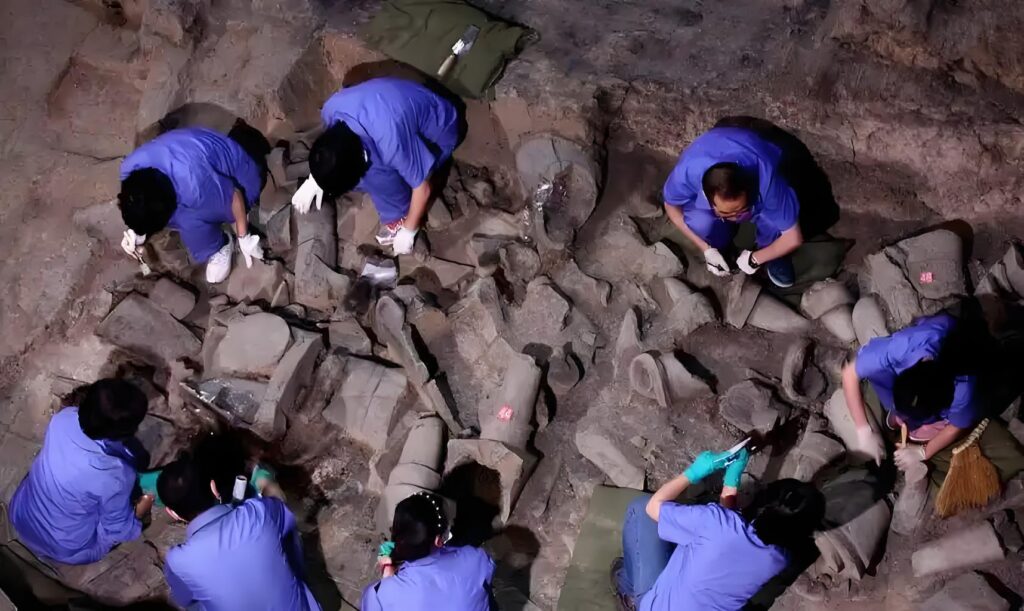
The Gift of Time
Yuan Zhongyi, 92, is one of the earliest archaeologists who participated in the excavation of the Terra Cotta Warriors. He still cares about the Qin Mausoleum: “The archaeology of the Terra Cotta Warriors and the Mausoleum of the First Emperor of Qin still needs the persistence and unremitting efforts of several generations”. Today’s archaeologists are no longer eager to uncover all secrets, but are balancing excavation and protection with a more cautious attitude – restored terracotta figurines stand still in display cabinets, digital images circulate in the cloud, and future protection technologies are being developed in international collaborative laboratories.
The excavation process of this’ underground legion ‘is like a civilized dialogue with time. When American audiences stand in front of the restored general figurines, what they see is not only a masterpiece of sculpture from two thousand years ago, but also a civilization inheritance network woven by generations of archaeologists with patience and technology. The buried tomb of Emperor Qin Shi Huang will serve as a “letter for the future”, waiting for the day when humanity can open it without regret, and then tell the world the complete legend of the Qin Empire.


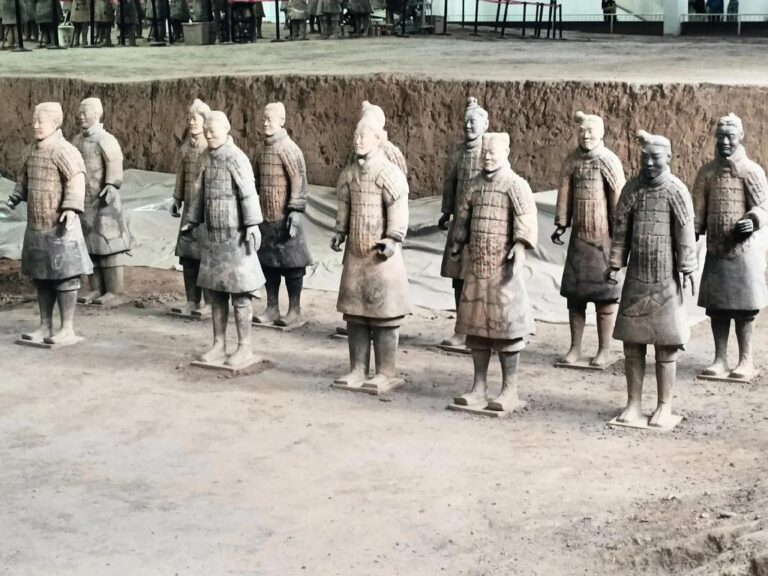
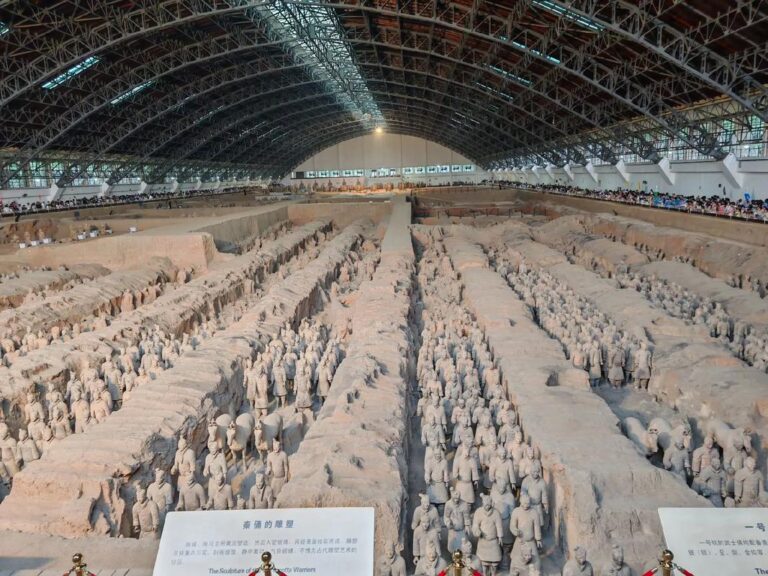

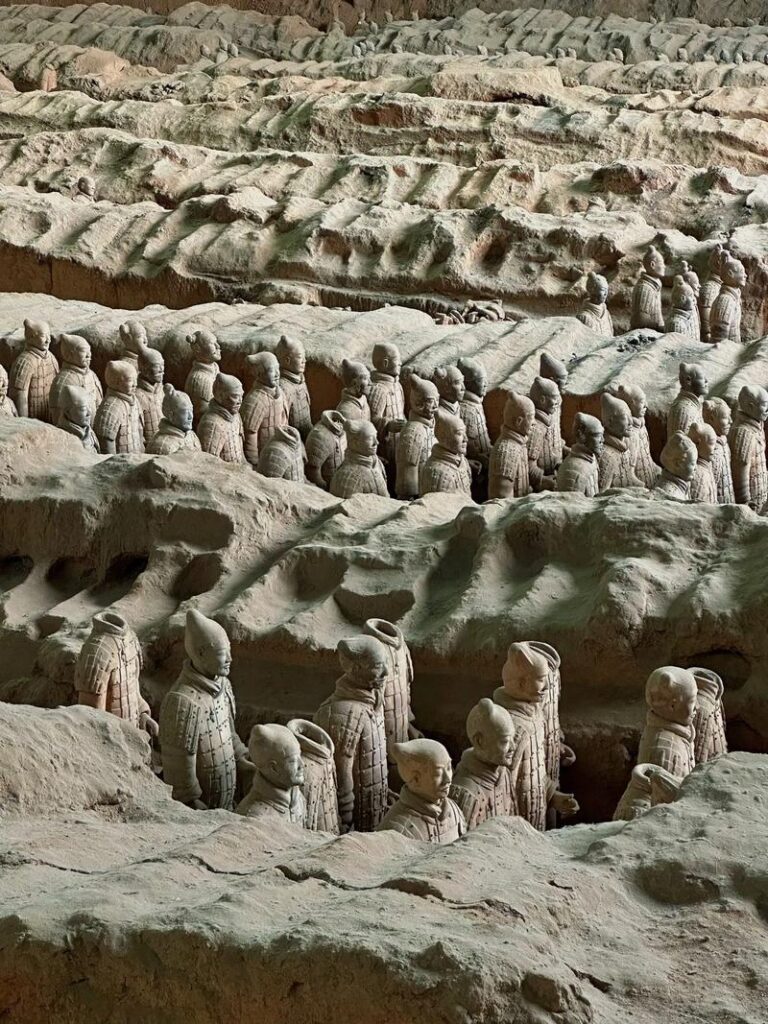
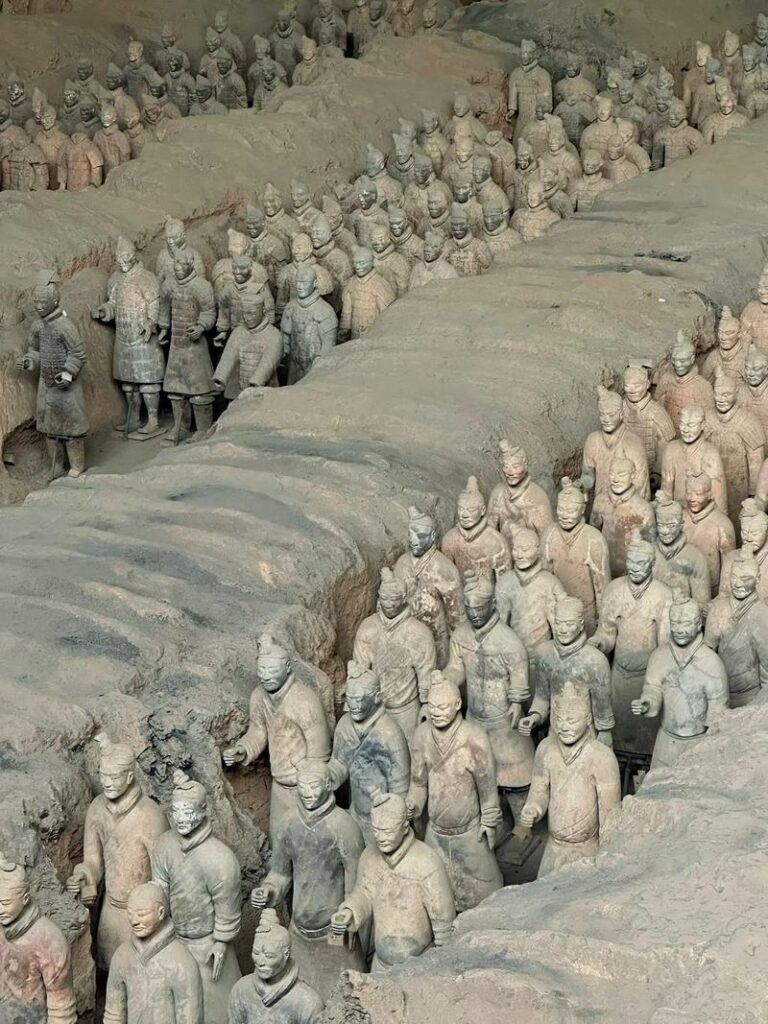
As the most influential and well-known tourist attraction in Xi’an, the Terracotta Warriors offer a unique glimpse into China’s ancient history. For more information on Xi’an travel tips, please visit: https://chinaxiantravelguide.com/
Are you guys doing a travel guide for Xi’an?